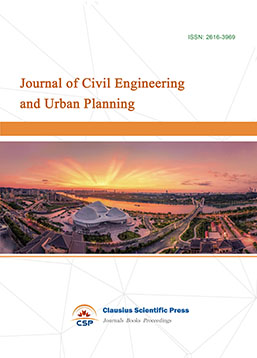Improving Waterfront Slow Greenway's Environmental Perception and Strategy for Healthy Cities: Xiaodong River Case Study in Maoming City
DOI: 10.23977/lsuh.2023.050102 | Downloads: 41 | Views: 1663
Author(s)
Yu Chen 1, Miaochun Lin 1, Qizhuo Yue 1, Pei Luo 1
Affiliation(s)
1 Guangdong University of Petrochemical Technology, Maoming, Guangdong, 525000, China
Corresponding Author
Pei LuoABSTRACT
With the concept of national fitness deeply rooted in people's hearts, outdoor slow-moving space has become an important content of urban construction, and urban waterfront slow-moving greenway is an important activity space for citizens to have leisure and recreational exchanges, which is of great significance to building a healthy urban environment. This paper selects the Xiaodong River slow-moving greenway in Maoming City as the research object, deeply analyzes the citizens' environmental perception experience in walking, and constructs the pedestrian landscape perception evaluation system of the waterfront slow-moving greenway. Based on the post-occupancy evaluation (POE) investigation analysis method and Analytic Hierarchy Process (AHP), this paper assigns values to each index element, analyzes and summarizes the shortcomings of slow-moving greenway design, and puts forward suggestions for improvement, aiming at providing wisdom for its development.
KEYWORDS
Waterfront greenway slow traffic system, post-occupancy evaluation, perceived evaluation, sustainable development, healthy citiesCITE THIS PAPER
Yu Chen, Miaochun Lin, Qizhuo Yue, Pei Luo, Improving Waterfront Slow Greenway's Environmental Perception and Strategy for Healthy Cities: Xiaodong River Case Study in Maoming City. Landscape and Urban Horticulture (2023) Vol. 5: 8-14. DOI: http://dx.doi.org/10.23977/lsuh.2023.050102.
REFERENCES
[1] Xu Minghui, Wang Hao, Chen Zhanchuan. Evaluation and Promotion Strategy of Slow Green Road in Haikou Wanshui Park under Green Health Perspective. Garden, 2022, 39 (11): 123-129.
[2] Cai Xiao, Su Zhenyu. Perception Evaluation of Walking Environment on Green Road in Binjiang, Nanchang City — Taking Ganjiang Citizen Park as an Example. Urban Architecture, 2022, 19 (17):190-194.
[3] Yan Yulei, Zhang Jun. Discussion on the Planning and Design of Community Slow-walking Greenway under the Guidance of Health. Urban Architecture, 2018(02): 71-73.
[4] E. Dinand Ekkel, Sjerp de Vries. Nearby green space and human health: Evaluating accessibility metrics. Landscape and Urban Planning, 2017, 157: 214-220.
[5] Ji Xiaoyu. Study on Emergency Optimization Design of Multi-story Residential Buildings Based on Major Public Health Emergencies. Hebei University of Engineering, 2022.
[6] Jing Q, Xiang W N, Liu Y, et al. Incorporating landscape diversity into greenway alignment planning. Urban Forestry & Urban Greening, 2018, 35: 45-56.
[7] Han Yunong. Research on the renewal design of streets around Beijing universities under the guidance of slow travel system. Beijing Jiaotong University, 2021.
[8] Tan Shaohua, Chen Luyao, Yang Chun. The influence of greenway environment on residents' use intensity from the perspective of health. Southern Architecture, 2021(03): 15-21.
[9] Ma Ming, Cai Zhenyu. Research on urban green open space from the perspective of health——Health utility and design response. Chinese Garden Architecture, 2016, 32(11): 66-70.
[10] Wang Yang, Yu Yun, He Yukun. Research on resilient greenway landscape construction mode for future communities: A case study of Hangzhou Jiuqiao International IoT community greenway project. Landscape Architecture, 2021, 38(11): 77-83.
| Downloads: | 1602 |
|---|---|
| Visits: | 98256 |
Sponsors, Associates, and Links
-
Journal of Sustainable Development and Green Buildings

-
Bridge and Structural Engineering

-
Soil Mechanics and Geotechnical Engineering

-
Journal of Civil Engineering and Urban Planning

-
Journal of Municipal Engineering

-
Heating, Ventilation and Air Conditioning

-
Indoor Air Quality and Climate

-
Computer Aided Architecture Design


 Download as PDF
Download as PDF